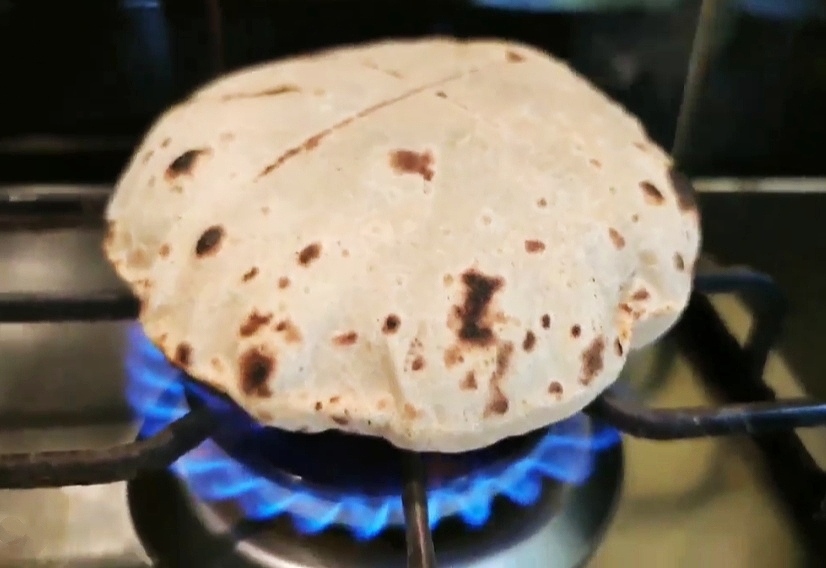This phulka (roti /rooti) recipe l puffed Indian flatbread is one of the most commonly made Indian flatbreads in our home. A phulka is cooked partly over an iron skillet and partly over an open flame which helps it to puff up.
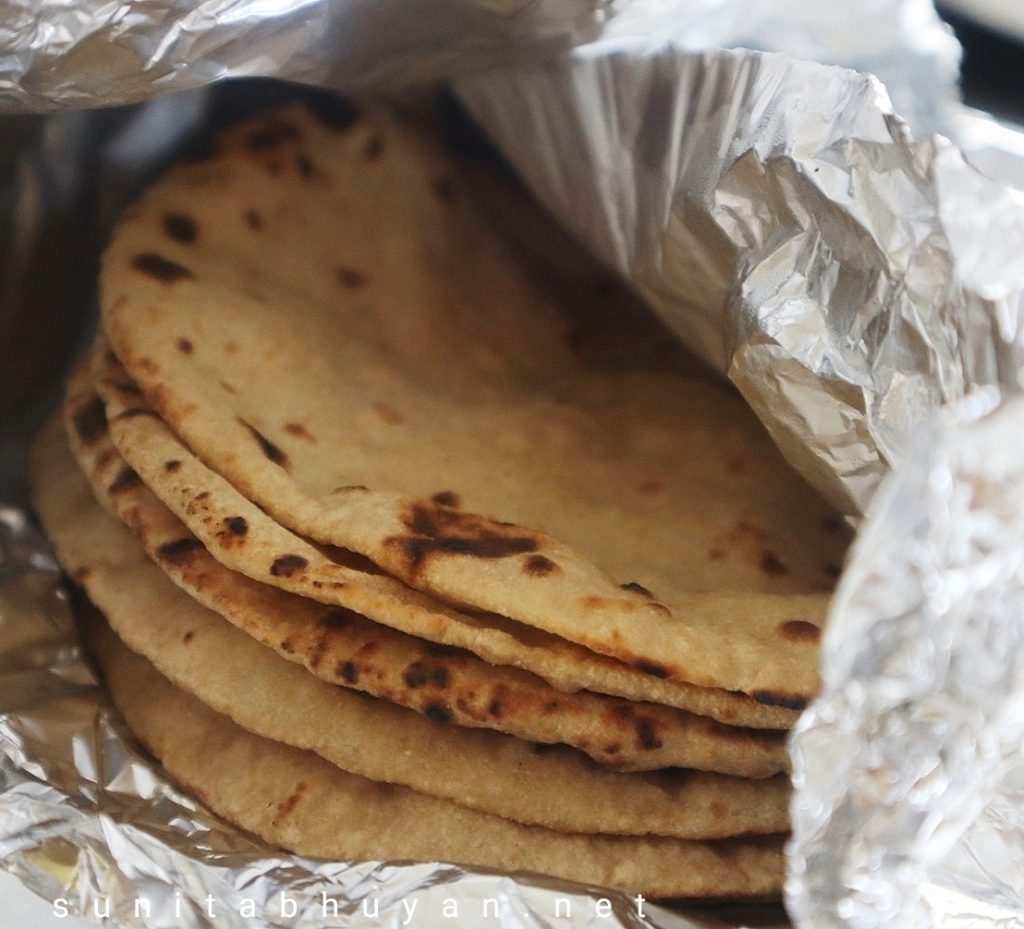
Phulka? Roti?
The phulka is also called a ‘roti’ (or ‘Rooti’ in Assamese) by many, another unleavened Indian flatbread. The dough for both are made with whole wheat flour (atta) and water. Some may add salt and a little oil to the dough, but most (me included) prefer to make the dough with just flour and water.
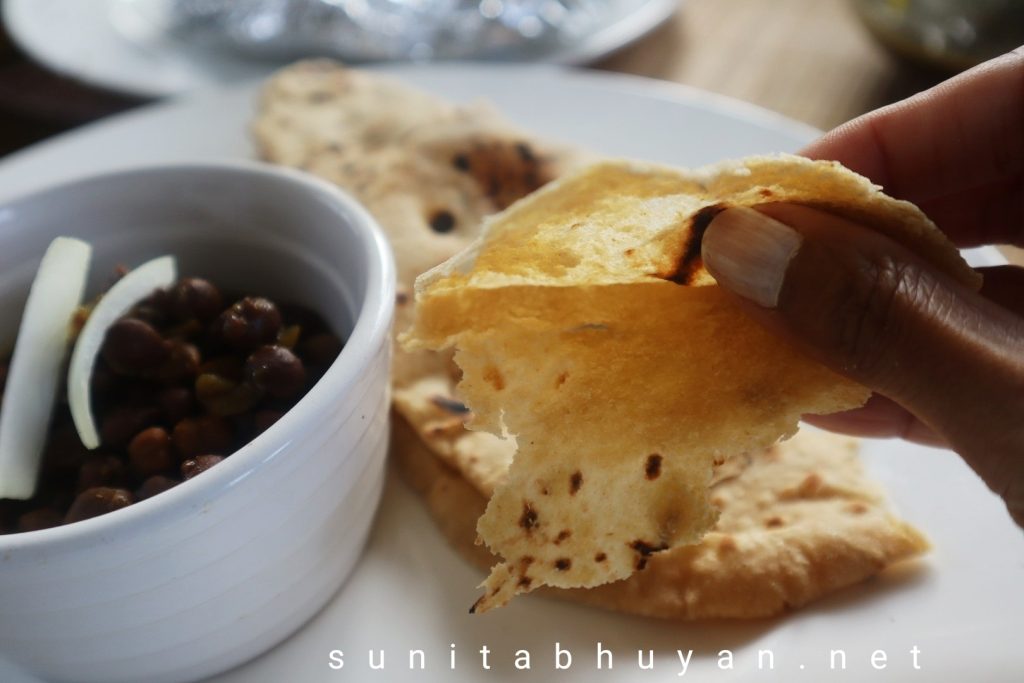
However, the basic difference between a roti/rooti and phulka is that while rotis are cooked completely on a tawa / flat griddle pan, phulkas are cooked partly on a tawa and partly over an open flame which makes it puff up. Some might argue that phulka is a type of roti / rooti that puffs up. All phulkas may very well be called roti / rooti but not all rotis /rootis are phulkas; hope that makes sense! Whatever you choose to call it, these unleavened Indian flatbreads are truly comforting and goes well with almost any Indian dal, curry or sabzi (Indian style vegetable dish without gravy).
Just two ingredients-
The ‘phulka’ doing its thing on the flames is a very common sight in many Indian kitchens. And doesn’t matter how many hundreds or thousands of phulkas I’ve made and continue to make in my lifetime, each puffed one makes my heart sing! Amazing how just a combination of flour and water can create such magic!! For a novice cook, it might seem intimidating at first, but it does get better with practice.
I am sharing a few pointers from my years of experience of making phulkas that has worked for me-
The dough-
Like many, I make the phulka dough with just plain whole wheat flour (atta) and water. The dough needs to be soft, but not wet. It also needs to be rested. I do mine for a minimum of half an hour; if you are pressed for time, you can keep it for half that time. But I have found that a well rested dough produces better phulkas.
Water-
I use normal water at room temperature for the dough.
Rolling-
Divide the dough into portions, and shape into small discs before rolling them out. Keep some extra flour in a bowl and before rolling, dredge each portion of dough in it. Apply equal pressure to roll out the dough into discs which are not too thick or thin. Keep the edges thinner.
The pan-
Earlier, I used to cook the phulkas on the traditional heavy iron tawa / griddle pan. However, for the last, quite a few years, I have been making them on a small non stick pan. It’s been working like a dream and I find it very convenient. So cook it on whichever you prefer.
The heat-
The control of the heat is one of the major factors in making good phulkas. If the pan is not hot enough, the phulkas will be hard and if it is too hot, they will burn. Try to maintain a medium high heat. Once the phulkas are placed on the open flames, increase the heat to high, wait for it to puff up and flip on the other side.
Serving-
After cooking the phulkas, many add ghee or butter on them. I usually serve them plain and have them alongside some vegetarian or non vegetarian curry.
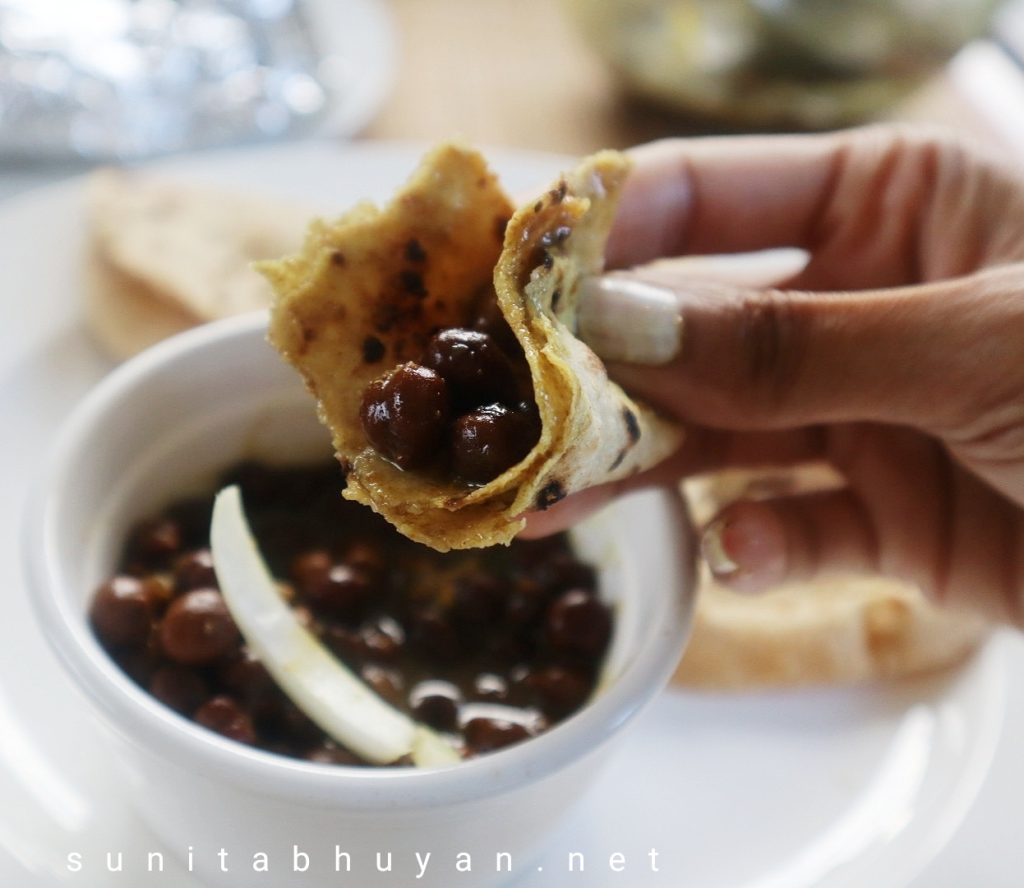
Storing-
I usually make my phulkas just before serving. I stack them and wrap in some aluminium foil and most are used after they are brought to the table. You can also wrap them in a cotton tea towel and keep covered in a bowl.
Practice-
I have tried my best to share any tips I have regarding making the phulkas. I can now roll and cook the phulkas simultaneously. But, do keep in mind that I do have many years of phulka making experience behind me.
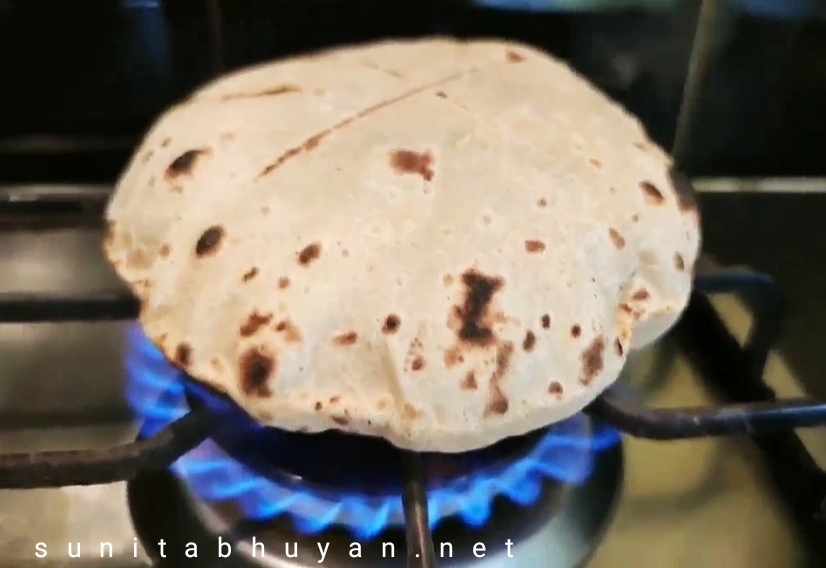
Continue reading for the full recipe and video for Phulka (roti /rooti) recipe l Puffed Indian flatbread
All the Indian recipes on this website can be found here.
You might also like to try the following recipes from this website-
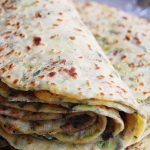
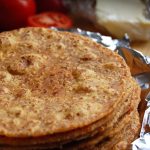
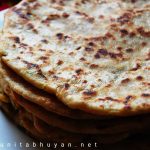
Subscribe to Sunita’s World – life and food! to receive updates on latest posts, tips and recommendations straight to your inbox! Simply fill in the details below. Thank you!
On another note, if you try any recipe from this website, do take a photo and tag me on instagram @sunita_bhuyan. I would love to see your creations! Also, do connect on other socials too; links to all my socials are given below-
STAY CONNECTED:Recipe card-
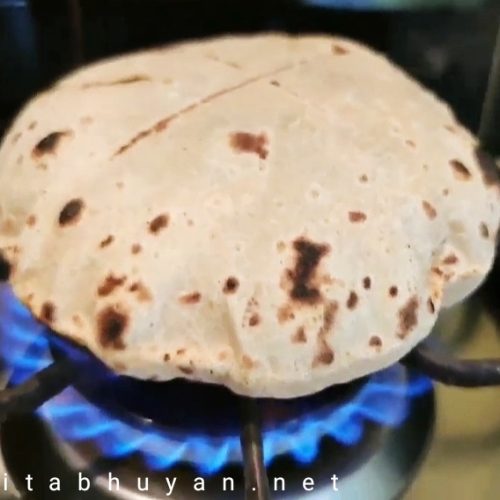
Phulka (roti /rooti) recipe l Puffed Indian flatbread
Ingredients
- 3 cups plain whole wheat flour (atta) + a little extra for rolling and dusting
- 1¼ – 1½ cups of water (may need more or less)
Instructions
- Add the flour to a bowl.
- Add the water to the flour, gradually.
- Start mixing and bringing everything together. Knead till you have a smooth ball of dough. I took the dough out of the ball and kneaded on the counter as it was more convenient. You can knead in your bowl if it is more convenient for you.
- The dough should be soft but not wet. If it feels wet, dust a little flour and knead in. (see notes below)
- Make a smooth ball of dough and place it back in the bowl (if you were kneading on the counter). Cover with plastic wrap and let it rest for at least 30 minutes.
- Dust your hands and rolling board. Take half of the dough and keep the rest covered in the bowl. Shape it into a log and divide into 9-10 equal portions. Shape into balls and slightly flatten them.
- Heat a pan over medium to high heat. (see notes below)
- Keep the extra flour in a bowl. Take a portion of the dough and roll in the flour.
- Dust the rolling board and rolling pin and roll the portion of dough into a disc; keep the edges thinner. (see notes below)
- Dust off any excess flour and place it on the pan.
- Cook for approximately 25-30 seconds or till you see air bubbles.
- Turn over and cook that side for another few seconds, pressing down with a spatula and it will begin to puff up slightly with brown spots developing.
- Transfer the roti from the pan to an open flame with the help of tongs. It will puff up like a balloon. Turn over quickly with tongs. Do not cook for very long over the open flame.
- Place in a piece of foil. Repeat with the rest of the balls of dough and stack the phulkas one atop the other.
- Repeat with the other half of the dough.
- Wrap the stack of phulkas in foil and serve immediately. (see notes below)
Video
Notes
You might also like to try the following recipes from this website-
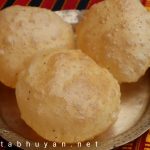
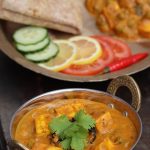
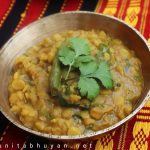
Until next time,
Sunita
STAY CONNECTED:
